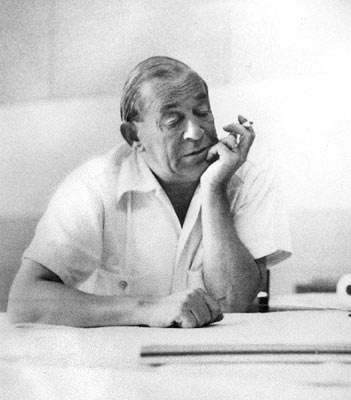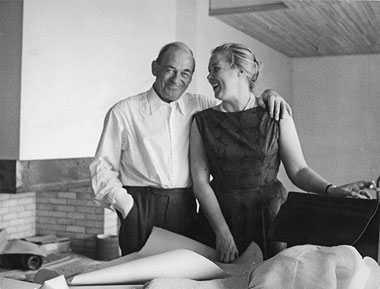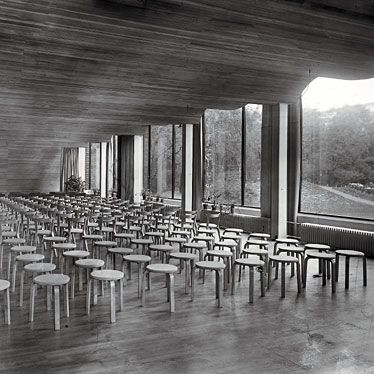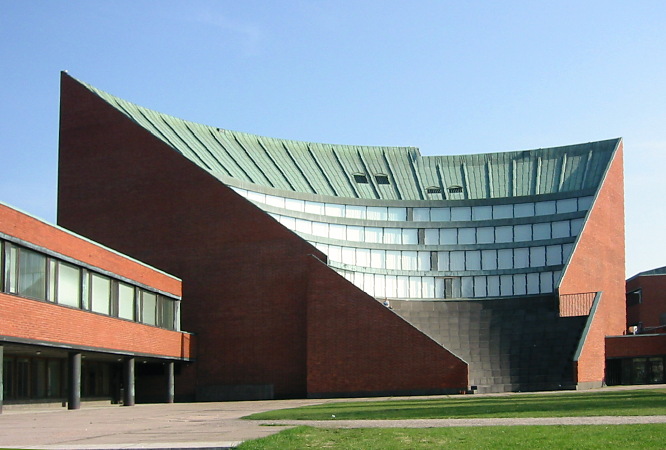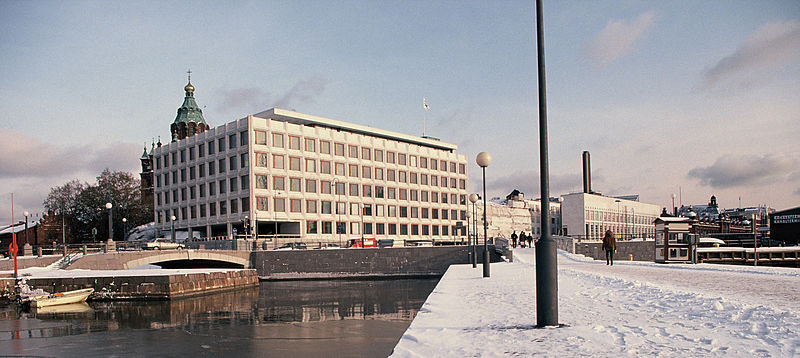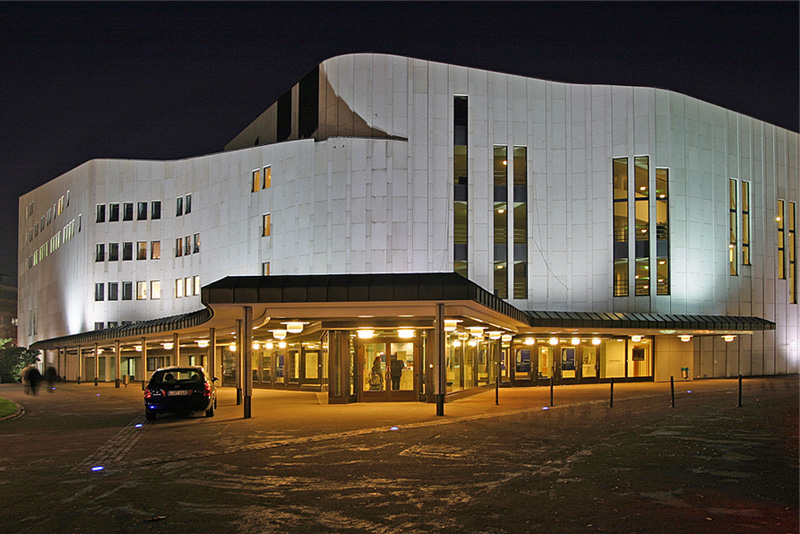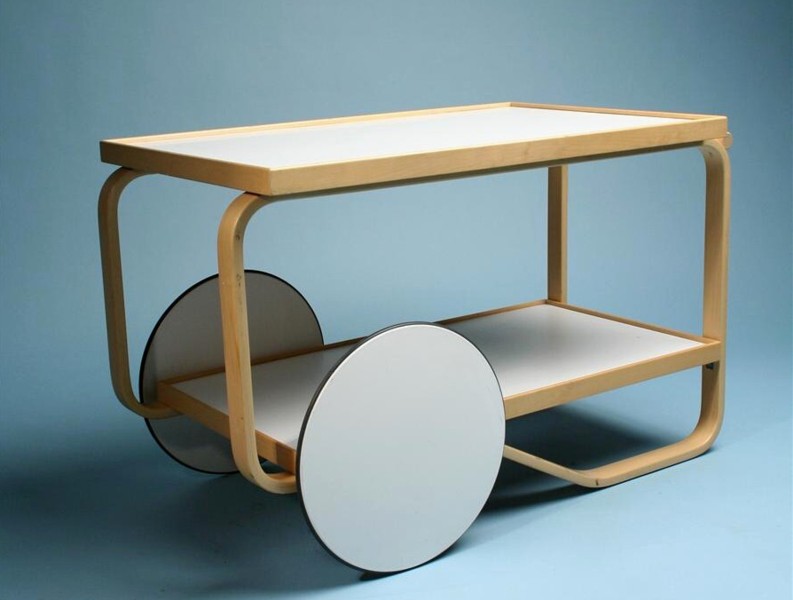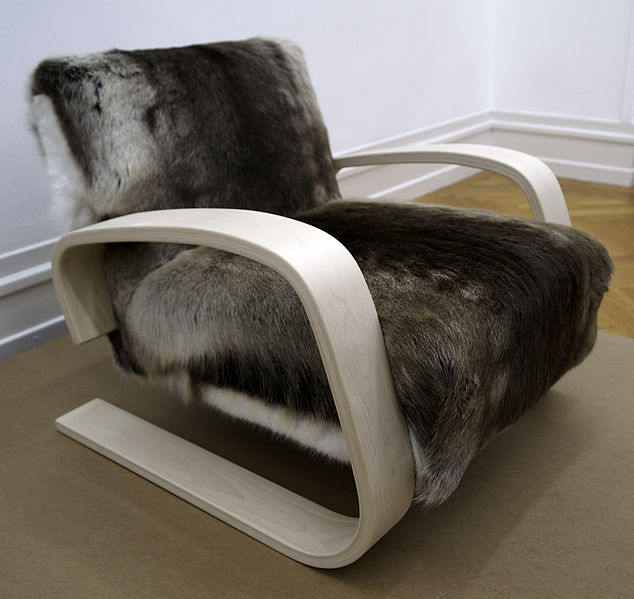<Back to Index>
- Mathematician Arne Carl August Beurling, 1905
- Architect Hugo Alvar Henrik Aalto, 1898
- Prime Minister of Spain Juan Negrín y López, 1892
PAGE SPONSOR
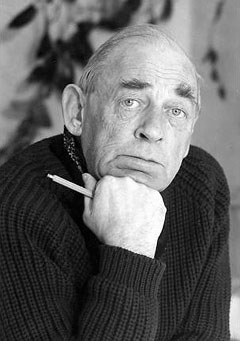
Hugo Alvar Henrik Aalto (February 3, 1898, Kuortane – May 11, 1976, Helsinki) was a Finnish architect and designer. His work includes architecture, furniture, textiles and glassware. Aalto's early career runs in parallel with the rapid economic growth and industrialization of Finland during the first half of the twentieth century and many of his clients were industrialists; among these were the Ahlström - Gullichsen family. The span of his career, from the 1920s to the 1970s, is reflected in the styles of his work, ranging from Nordic Classicism of the early work, to a rational International Style Modernism during the 1930s to a more organic modernist style from the 1940s onwards. What is typical for his entire career, however, is a concern for design as a Gesamtkunstwerk, a total work of art; whereby he - together with his first wife Aino Aalto - would design not just the building, but give special treatments to the interior surfaces and design furniture, lamps, and furnishings and glassware. The Alvar Aalto Museum, designed by Aalto himself, is located in what is regarded as his home city Jyväskylä.
Alvar Aalto was born in Kuortane, Finland. His father, Johan Henrik Aalto, was a Finnish speaking land surveyor and his mother, Selly (Selma) Matilda (née Hackstedt) was a postmistress. When Aalto was 5 years old, the family moved to Alajärvi, and from there to Jyväskylä in Central Finland. Aalto studied at the Jyväskylä Lyceum school, completing his basic education in 1916. In 1916 he then enrolled to study architecture at the Helsinki University of Technology, graduating in 1921.
In 1923 he returned to Jyväskylä, where he opened his first architectural office. Jyväskylä would become a notable city for his architecture, with more buildings designed by him than in any other city. The following year he married architect Aino Marsio. Their honeymoon journey to Italy sealed an intellectual bond with the culture of the Mediterranean region that was to remain important to Aalto for the rest of his life. The Aaltos moved their office to Turku in 1927, and started collaborating with architect Erik Bryggman. The office moved again in 1933 to Helsinki.
The Aaltos designed and built a joint house - office (1935 – 36) for themselves in Munkkiniemi, Helsinki, but later (1954 – 56) had a purpose - built office built in the same neighbourhood - the latter building nowadays houses the Alvar Aalto Academy. Aino and Alvar Aalto had 2 children, a daughter Johanna "Hanni" Alanen, born Aalto, 1925, and a son Hamilkar Aalto, 1928. In 1926 the young Aaltos designed and had built a summer cottage in Alajärvi, Villa Flora. Aino Aalto died of cancer in 1949. In 1952 Aalto married architect Elissa Mäkiniemi (died 1994), who had been working as an assistant in his office. In 1952 Aalto designed and had built a summer cottage, the so-called Experimental House, for himself and his new wife in Muuratsalo in Central Finland. Alvar Aalto died on May 11, 1976, in Helsinki.
Although he is sometimes regarded as among the first and most influential architects of Nordic modernism, a closer examination of the historical facts reveals that Aalto (while a pioneer in Finland) closely followed and had personal contacts with other pioneers in Sweden, in particular Gunnar Asplund and Sven Markelius. What they and many others of that generation in the Nordic countries had in common was that they started off from a classical education and were first designing in the so-called Nordic Classicism style – a style that had been a reaction to the previous dominant style of National Romanticism – before moving, in the late 1920s, towards Modernism. On returning to Jyväskylä in 1923 to establish his own architect's office, Aalto busied himself with a number of single family homes, all designed in the classical style, such as the manor like house for his mother's cousin Terho Manner in Töysa in 1923, a summer villa for the Jyväskylä chief constable in 1923 and the Alatalo farmhouse in Tarvaala in 1924. During this period he also completed his first public buildings, the Jyväskylä Workers' Club in 1925, the Jyväskylä Defence Corps building in 1926 and the Seinajoki Defence Corp building in 1924 - 29. Aalto also entered several architectural competitions for prestigious state public buildings, both in Finland and abroad, including the two competitions for the Finnish Parliamentary building in 1923 and 1924, the extension to the University of Helsinki in 1931, and the building to house the League of Nations in Geneva, Switzerland, in 1926 - 27. Furthermore, this was the period when Aalto was most prolific in his writings, with articles for professional journals and newspapers. Among his most well known essays from this period are "Urban culture" (1924), "Temple baths on Jyväskylä ridge" (1925), "Abbé Coignard's sermon" (1925), and "From doorstep to living room" (1926).
The shift in Aalto's design approach from classicism to modernism is epitomised by the Viipuri Library (1927 – 35), which went through a transformation from an originally classical competition entry proposal to the completed high - modernist building. Yet his humanistic approach is in full evidence in the library: the interior displays natural materials, warm colours, and undulating lines. Due to problems over financing and a change of site, the Viipuri Library project lasted eight years, and during that same time he also designed the Turun Sanomat Building (1929 – 30) and Paimio Sanatorium (1929 – 33). Thus, the Turun Sanomat Building first heralded Aalto's move towards modernism, and this was then carried forward both in the Paimio Sanatorium and in the on-going design for the library. Although the Turun Sanomat Building and Paimio Sanatorium are comparatively pure modernist works, they too carried the seeds of his questioning of such an orthodox modernist approach and a move to a more daring, synthetic attitude.
Through Sven Markelius, Aalto became a member of the Congres Internationaux d'Architecture Moderne (CIAM), attending the second congress in Frankfurt in 1929 and the fourth congress in Athens in 1933, where he established a close friendship with László Moholy - Nagy, Sigfried Giedion and Philip Morton Shand. It was during this time that he followed closely the work of the main driving force behind the new modernism, Le Corbusier, and visited him in his Paris office several times in the following years.
It was not until the completion of the Paimio Sanatorium (1929) and Viipuri Library (1935) that Aalto first achieved world attention in architecture. His reputation grew in the USA following the critical reception of his design for the Finnish Pavilion at the 1939 New York World's Fair, described by Frank Lloyd Wright as a "work of genius". It could be said that Aalto's international reputation was sealed with his inclusion in the second edition of Sigfried Giedion's influential book on Modernist architecture, Space, Time and Architecture: The growth of a new tradition (1949), in which Aalto received more attention than any other Modernist architect, including Le Corbusier. In his analysis of Aalto, Giedion gave primacy to qualities that depart from direct functionality, such as mood, atmosphere, intensity of life and even national characteristics, declaring that "Finland is with Aalto wherever he goes".
Aalto's early experiments with wood and his move away from a purist modernism would be tested in built form with the commission to design Villa Mairea (1939) in Noormarkku, the luxury home of the young industrialist couple Harry and Maire Gullichsen. It was Maire Gullichsen who acted as the main client, and she worked closely not only with Alvar but also Aino Aalto on the design, inspiring them to be more daring in their work. The original design was to include a private art gallery, but this was never built. The building forms a U-shape around a central inner "garden" the central feature of which is a kidney - shaped swimming pool. Adjacent to the pool is a sauna executed in a rustic style, alluding to both Finnish and Japanese precedents. The design of the house is a synthesis of numerous stylistic influences, from traditional Finnish vernacular to purist modernism, as well as influences from English and Japanese architecture. While the house is clearly intended for a wealthy family, Aalto nevertheless argued that it was also an experiment that would prove useful in the design of mass housing.
His increased fame led to offers and commissions outside Finland. In 1941 he accepted an invitation as a visiting professor to MIT, in the USA. This was during the Second World War, and he involved his students in designing low cost, small scale housing for the reconstruction of war-torn Finland. While teaching at MIT, Aalto also designed the student dormitory, Baker House, completed in 1948. This building was the first building of Aalto's redbrick period. Originally used in Baker House to signify the Ivy League university tradition, on his return to Finland Aalto used it in a number of key buildings, in particular, in several of the buildings in the new Helsinki University of Technology campus (starting in 1950), Säynatsalo Town Hall (1952), Helsinki Pensions Institute (1954), Helsinki House of Culture (1958), as well as in his own summer house, the so-called Experimental House in Muuratsalo (1957).
The early 1960s and 1970s (up until his death in 1976) were marked by key works in Helsinki, in particular the huge town plan for the void in centre of Helsinki adjacent to Töölö Bay and the vast railway yards, and marked on the edges by significant buildings such as the National Museum and the main railway station, both by Eliel Saarinen. In his town plan Aalto proposed a line of separate marble - clad buildings fronting the bay which would house various cultural institutions, including a concert hall, opera, museum of architecture and headquarters for the Finnish Academy. The scheme also extended into the Kamppi district with a series of tall office blocks. Aalto first presented his design in 1961, but it went through various modifications during the early 1960s. Only two fragements of the overall plan were ever realized: the Finlandia Hall concert hall (1976) fronting Töölö Bay, and an office building in the Kamppi district for the Helsinki Electricity Company (1975). The Miesian formal language of geometric grids employed in the buildings was also used by Aalto for other sites in Helsinki, including the Enso - Gutzeit building (1962), the Academic Bookstore (1962) and the SYP Bank building (1969).
Following Aalto's death in 1976 his office continued to operate under the direction of his widow, Elissa, completing works already to some extent designed. These works include the Jyväskylä City Theatre and Essen Opera House. Since the death of Elissa Aalto the office has continued to operate as the Alvar Aalto Academy, giving advice on the restoration of Aalto buildings and organising the vast archive material.
Aalto's awards included the Royal Gold Medal for Architecture from the Royal Institute of British Architects (1957) and the Gold Medal from the American Institute of Architects (1963). He was elected a Foreign Honorary Member of the American Academy of Arts and Sciences in 1957.
Aalto's career spans the changes in style from (Nordic Classicism) to purist International Style Modernism to a more personal, synthetic and idiosyncratic Modernism. Aalto's wide field of design activity ranges from the large scale of city planning and architecture to interior design, furniture and glassware design and painting. It has been estimated that during his entire career Aalto designed over 500 individual buildings, approximately 300 of which were built, the vast majority of which are in Finland. He also has a few buildings in the USA, Germany, Italy, and France.
Aalto
claimed that his paintings were not made as individual artworks but as
part of his process of architectural design, and many of his small
scale "sculptural" experiments with wood led to later larger
architectural details and forms. These experiments also led to a number
of patents: for example, he invented a new form of laminated
bent - plywood furniture in 1932. His experimental method had been
influenced by his meetings with various members of the Bauhaus design school, especially László Moholy - Nagy,
whom he first met in 1930. Aalto's furniture was exhibited in London in
1935, to great critical acclaim, and to cope with the consumer demand
Aalto, together with his wife Aino, Maire Gullichsen and Nils - Gustav Hahl founded the company Artek that same year. Aalto glassware (Aino as well as Alvar) is manufactured by Iittala. Aalto has been commemorated in a number of ways:
